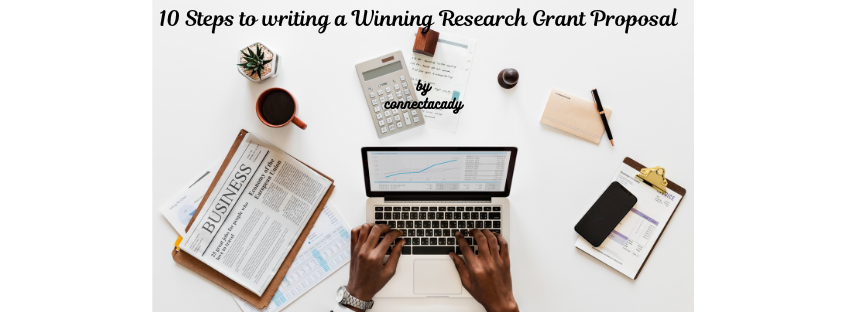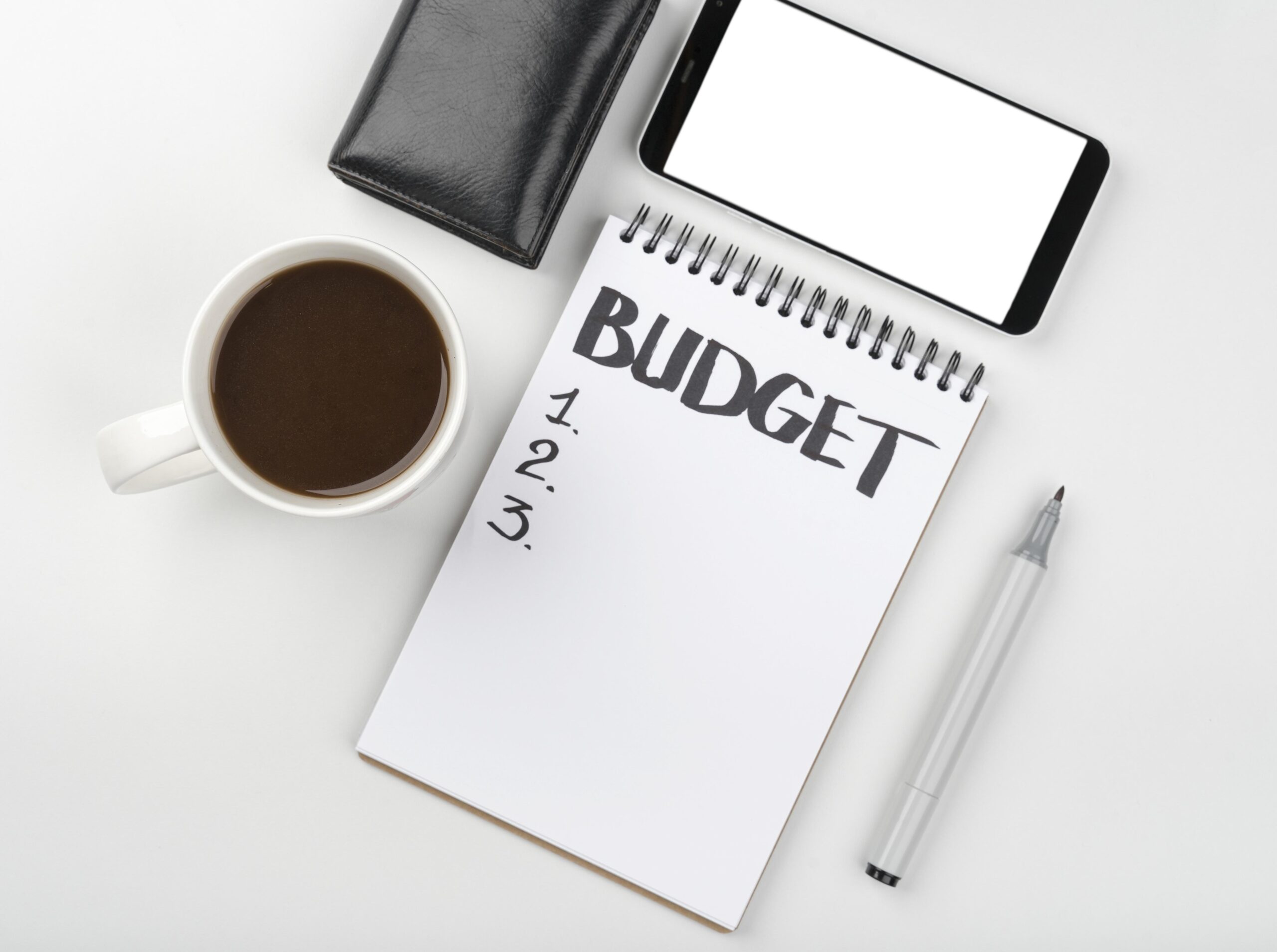
Have you ever wondered how some researchers manage to secure those highly sought-after research grants and fellowships, while others struggle to get their proposals noticed? If you’re aiming to bring your research ideas to life, there are steps to writing a winning research proposals. Crafting a strong proposal can be the difference between securing funding and watching your dreams fade away. In this post, we’ll walk you through everything you need to know on writing a winning research proposal that not only stands out but also meets the expectations of funders.
By the end of this article, you’ll have a clear roadmap for writing a research proposal that not only meets the expectations of grant providers but stands out from the competition. Ready to get started? Let’s go.
Why Writing a Winning Research Proposal is Crucial
Securing a research grant or fellowship is often the key to turning your academic dreams into reality. It gives you the financial backing to pursue your ideas and make a real-world impact. A well-crafted proposal demonstrates your ability to think critically, plan strategically, and execute effectively. The steps to writing a winning research proposal isn’t just about putting words on paper. It’s about presenting your vision clearly and persuasively to potential funders.
The Impact of Funding on Research Outcomes
Funding allows researchers to carry out innovative projects, explore uncharted territories, and contribute valuable insights to their fields. Without sufficient funding, even the most groundbreaking research ideas can remain just ideas. This is why writing a proposal that gets noticed is so crucial.
How a Well-Written Proposal Can Set You Apart
Competition for research grants and fellowships can be fierce. A strong proposal can help you stand out from the crowd. But how do you do this? You need a proposal that’s clear, concise, and compelling. This requires more than just a solid research idea, it involves mastering the art of grant proposal writing.
Step 1: Understanding the Grant Requirements

The first step to writing a research proposal that wins grants is understanding the requirements of the funding organization.
Research the Funding Organization
Grant funders typically have specific goals, objectives, and priorities. It’s essential to thoroughly research the organization to understand what they value and what types of projects they fund. Visit their website, read their mission statement, and review past projects they’ve funded.
Know the Funding Focus and Criteria
Make sure your research proposal aligns with the organization’s focus. Some grants may be specifically for scientific studies, while others may be geared toward social impact, education, or innovation. Review the grant guidelines carefully to understand what the funder is looking for in a proposal.
Check Eligibility Requirements
Before you start writing, double-check that you meet all the eligibility criteria. Some grants may require you to be a specific type of institution, work in a particular field, or have a certain level of experience.
Step 2: Define Your Research Problem Clearly
Defining the problem at the heart of your research is crucial for creating a winning proposal. Funders need to understand what issue you’re tackling, why it matters, and how your research will contribute to solving it. So, how do you define your research problem clearly?
Identifying the Core Issue
Start by identifying the core issue you’re addressing. Ask yourself: What is the gap in knowledge or the real-world challenge that needs attention? Whether it’s an environmental concern, a health issue, or a technological limitation, your problem should be specific, relevant, and urgent. For instance, a research problem could be as specific as “the lack of access to clean water in rural communities” or “the rising incidence of mental health disorders among teenagers.”
Crafting a Problem Statement That Grabs Attention
A well-crafted problem statement should be concise yet impactful. It must highlight the significance of the issue and create a sense of urgency. Start with a strong opening that makes the problem relatable, backed by data or real-world examples. For example, “More than 1 billion people worldwide lack access to safe drinking water, resulting in millions of preventable deaths each year.”
Step 3: Conduct a Comprehensive Literature Review
A strong literature review establishes the foundation for your research and demonstrates your understanding of the existing work in your field.
Importance of Literature Review in Research Proposals
Grant reviewers want to see that you have a solid grasp of previous studies and that your research will build on or address gaps in the current knowledge. A well-researched literature review strengthens your proposal by showing you’re aware of the latest research and trends.
How to Structure and Organize Your Literature Review
Your literature review should be organized logically. Start with a broad overview of existing research, then narrow it down to studies that are most relevant to your proposal. Identify gaps in the research and explain how your study will address them.
Step 4: Develop a Solid Research Methodology

When you’re writing a research proposal one of the most important parts is your methodology. Funders want to know how you’ll collect and analyse data so you need to choose the right methodology to match your research goals.
Different Methodologies: Qualitative vs. Quantitative
There are two main types of methodologies: qualitative and quantitative.
Qualitative research is about understanding experiences, behaviours or social phenomena. It’s more subjective and often uses interviews, focus groups or case studies. It’s perfect for in-depth perspectives like in the social sciences or humanities.
Quantitative research is about numbers and measurable data. It’s objective and often uses surveys, experiments or statistical analysis. It’s ideal when you need to analyse patterns, trends or relationships between variables like in scientific or health related research.
Choosing the Right Methodology for Your Project
To decide which methodology is best for your project think about the type of questions you’re asking. If you want to uncover detailed insights into human behaviour or culture a qualitative approach may be best. If you’re testing a hypothesis or measuring statistical data quantitative methods will be better.
By choosing the right methodology you’re showing funders you’ve thought critically about how to answer your research questions which is key to how to write a research proposal that wins grants.
Step 5: Create a Feasible and Detailed Research Plan
When it comes to securing a grant, one of the key components of your research proposal is the plan you outline. A solid research plan shows funders that you’ve thought through the project in detail and are prepared to deliver on your promises. But how do you create a feasible and detailed research plan?
Setting Clear Goals and Objectives
Start by defining the primary goals of your research. What do you aim to achieve, and why is it important? Your objectives should be specific, measurable, achievable, relevant, and time-bound (SMART). This framework helps you create a clear path for your project and shows funders that your research has a defined direction.
For example, if your research focuses on clean water access, a goal might be: “To assess the impact of water filtration systems on rural communities’ health outcomes over the next 12 months.”
Developing a Timeline and Milestones
A timeline with milestones is critical in illustrating your plan’s feasibility. Break your research into phases and set clear deadlines for each milestone. This helps funders visualize your process and gives them confidence that your research can be completed on schedule.
For example, you might outline milestones like:
- Month 1-3: Literature review and site selection
- Month 4-6: Data collection
- Month 7-9: Data analysis and report drafting
Step 6: Justify the Importance of Your Research
To win a grant, the first step is to make sure your research is compelling. The key question to answer here is simple: Why does this research matter? Funders want to invest in work that solves real-world problems, fills knowledge gaps, or advances current understanding. They’re looking for impact, innovation, and potential change.
Here’s where a solid rationale comes into play. Start by connecting your research to current trends or pressing societal needs. For instance, if your study focuses on renewable energy, frame your research in terms of sustainability, environmental protection, and climate change which are issues that have global relevance.
Example: If you’re working on a healthcare proposal aimed at reducing childhood obesity, show how your research could inform public policy, impact healthcare strategies, and improve the lives of thousands of children. The clearer you are about the tangible benefits of your research, the stronger your proposal will be.
How to Demonstrate the Relevance of Your Research
Now that you’ve made the case for your project’s importance, you need to demonstrate its relevance. This is where research data and context become crucial. Back up your claims with statistics, prior research, and expert opinions to show that your work is timely and valuable.
A great way to do this is by illustrating the gap in knowledge your research fills. Use published studies, reports, and examples from similar projects to highlight why your research is needed. Funders want to know that they’re backing something that hasn’t already been done or at least not in the way you’re proposing to do it.
For example, if you’re working on an educational technology proposal, provide data on how current educational tools fall short in certain areas, and show how your innovation fills that gap. Highlight the need for new methods, tools, or approaches that directly relate to your research.
Connecting Your Research to Broader Impacts
This is where your proposal can truly stand out. Grant funders don’t just want to know about the potential academic impact; they also want to understand how your research will affect society at large. This is your opportunity to connect your work to broader social, economic, or environmental outcomes.
Think about how your research could influence policy, improve industries, or contribute to solving major global issues. For instance, if your project is related to clean water access, you could talk about how your findings could contribute to sustainable water management systems in developing countries, or even inform legislation on water conservation.
To make this connection, consider the larger societal or ethical implications of your work. Will your research improve public health? Will it help to combat climate change? Will it lead to economic growth? By showing these broader impacts, you increase the likelihood of your proposal being funded.
Step 7: Write a Persuasive Budget Proposal

When it comes to grant writing, your research proposal might be stellar, but if the budget doesn’t align with your goals, it can be a deal-breaker. A well-crafted budget proposal is just as critical as the research itself. It’s where you lay out the financial needs of your project. So, how do you ensure your budget is persuasive enough to win that grant?
What Grant Funders Look for in a Budget
Grant funders want to see that you’ve done your homework and are being realistic with your financial needs. They want to ensure that the money they’re providing will be spent efficiently and effectively. Funders are looking for a few key elements in your budget:
- Clarity and Transparency
Your budget needs to be easy to follow. No one wants to dig through pages of unclear numbers or vague descriptions. Break down each cost in a clear and organized manner. Funders want to know exactly what they are paying for and how it relates to the project’s objectives. If they can easily understand how the budget supports your research, they’ll be more likely to approve it. - Reasonable and Realistic Costs
Funders want to know that you’re not over-inflating costs. For example, if you’re applying for a research grant to study the effects of air pollution, it’s important to justify the equipment and personnel costs in a way that makes sense for the scale and scope of your project. An unrealistic budget can raise red flags, so ensure that the costs reflect the work you’re actually doing. - Alignment with Project Goals
Every dollar in your budget should directly support your research goals. If you’re asking for funds for a specific activity, make sure you tie it to the desired outcome. For instance, if you’re asking for funds to hire a research assistant, explain how this role will support data collection and analysis, which is central to your research.
How to Justify Each Line Item in Your Budget Proposal
Justifying each line item in your budget proposal is about making the connection between what you’re asking for and how it will help you achieve the project’s goals. Here’s how you can approach it:
- Personnel Costs
If you’re budgeting for staff, including researchers, assistants, or project managers, provide details on why their roles are necessary. For example, if you need to hire an expert in data analysis, explain how their expertise will enhance the quality of your research findings. Break down their time commitment and corresponding compensation. Example: “The project requires 20 hours per week from Dr. Elvis, an expert in environmental data analysis, to ensure accurate interpretation of the collected data. The requested $25,000 will cover her salary for the duration of the project.” - Equipment and Supplies
Be clear about the tools, materials, or technologies you need. Don’t just list items, also explain why you need them and how they contribute to your project. Whether it’s specialized software, lab equipment, or fieldwork supplies, make it clear why each item is essential. Example: “The purchase of a high-precision air quality monitoring device ($5,000) is critical to ensuring the accuracy of air pollution measurements, which are fundamental to the project’s goals.” - Travel Expenses
If your research requires travel, justify the cost. Whether it’s for fieldwork or conference attendance, outline why the travel is necessary for the success of the project. Be specific about the destinations and the purpose of the trip. Example: “Travel to the Midwest ($2,500) will allow the research team to conduct on-site air quality tests, providing critical data for our study on regional pollution levels.” - Indirect Costs
These are overhead costs, such as office supplies, utilities, and administrative support. While funders typically expect some level of overhead, make sure you’re being realistic. You can justify these costs by explaining how they are necessary for the administration and smooth execution of the project. Example: “The 10% overhead cost ($3,000) will cover administrative support, data storage, and project management resources, which are essential to ensuring the project stays on track.”
Step 8: Highlight the Expected Outcomes and Deliverables of Your Research Project
One of the most crucial aspects of a research proposal is demonstrating what outcomes you expect and how you plan to deliver them. Funders want to see that your research will produce tangible results that can have an impact, whether it’s in academia, policy, or industry. But how do you communicate these expected outcomes effectively?
Defining Success for Your Research
To set your research up for success, you need to define what success looks like. Is it the publication of a paper? The development of a new technology? Or perhaps an innovative solution to a problem? Clearly outlining the success criteria is critical, as it provides funders with a roadmap for how you’ll measure and evaluate your work.
For example, if your project focuses on education reform, you could define success in terms of improved student outcomes, the development of a curriculum model, or policy recommendations for government stakeholders.
How to Present Results and Deliverables
In the proposal, clearly articulate the deliverables: the specific, tangible outputs you will produce at various stages of the project. These could be reports, datasets, presentations, publications, or prototypes. Be specific about when and how you’ll achieve these deliverables.
Example: “The first deliverable will be a comprehensive review of existing research on the impact of renewable energy in rural communities, to be completed within three months of the project start. The final deliverable will be a policy report detailing recommendations for sustainable energy use in rural areas, to be submitted by the end of the project.”
Step 9: Edit, Proofread, and Format Your Research Proposal Properly

Now that you’ve covered the content of your proposal, it’s time to focus on how it’s presented. The clarity of your writing and the structure of your proposal are just as important as the research itself. A well-written and professionally formatted proposal can make a huge difference in how funders perceive your work.
Importance of Clarity and Precision
One of the biggest mistakes researchers make is writing proposals that are overly complex or jargon-heavy. Funders may not be experts in your specific field, so clarity is key. Write in a way that anyone can understand the significance of your research, regardless of their background.
Make sure to keep sentences concise and free from unnecessary technicalities. For example, instead of saying, “The quantifiable parameters in the structural integrity of materials will be assessed to determine the performance at a molecular level,” simply state, “We will measure how materials perform under stress to better understand their durability.”
Checklist for Final Proposal Review
Before submitting your proposal, review it thoroughly using the following checklist:
- Is the proposal clear and concise?
- Are the objectives and outcomes clearly defined?
- Does the budget align with your research goals?
- Are the deliverables well-articulated and realistic?
- Is the proposal free of grammatical errors or typos?
- Is the proposal formatted correctly (e.g., fonts, headings, margins)?
- Are all required documents included, such as CVs, letters of support, or institutional endorsements?
A final proofread is essential to ensure that your research proposal is professional and error-free.
Step 10: Submitting Your Research Proposal
With your research proposal polished and ready to go, the next step is submission. But how do you know when and how to submit your proposal for maximum impact?
When and How to Submit Your Proposal
First, be sure to carefully read the grant guidelines and instructions before submitting. Funders typically provide detailed information on deadlines, submission platforms, and necessary documentation. If your proposal is being submitted electronically, ensure that you follow the correct file formatting instructions and double-check that everything is uploaded.
Some grants require hard copies, while others may use an online portal. Don’t miss the deadline. Submit early to avoid any last-minute issues. And if you’re submitting through an online portal, make sure to confirm that the submission has been successfully received.
Common Mistakes to Avoid During Submission
While you’re focused on getting everything right in your proposal, be aware of common mistakes that can derail the submission process:
- Missing Deadlines: Always check and double-check the deadlines. Late submissions are typically not accepted.
- Failure to Follow Instructions: Pay close attention to the formatting requirements and any specific instructions from the funder.
- Incomplete Proposal: Double-check that you’ve included all necessary documents and attachments.
- Ignoring Word or Page Limits: Stay within the specified limits. If a proposal asks for a 10-page narrative, don’t exceed it.
Being aware of these common pitfalls can ensure a smooth submission process.
Conclusion
Writing a winning research proposal that secures grants takes time, attention to detail, and a deep understanding of the funders’ priorities. By following these steps, you can increase your chances of success. These are the key steps to keep in mind when preparing your proposal:
- Highlight Expected Outcomes: Clearly define success and articulate the deliverables your research will produce.
- Edit and Proofread: Ensure clarity and precision in your writing, and format your proposal professionally.
- Submitting Your Proposal: Follow submission instructions carefully, avoid common mistakes, and submit on time.
Ultimately, crafting a proposal that wins grants is about demonstrating the potential impact of your research. When you focus on what the funders care about: clear outcomes, a sound methodology, and a realistic budget, you’re putting your best foot forward. So, when asking yourself how to write a research proposal that wins grants?, remember: it’s about being clear, precise, and well-organized every step of the way.
By adhering to these steps, you will not only improve your chances of getting funded but also enhance the credibility and impact of your research.
Frequently Asked Questions
- What is the first step in writing a research proposal?
The first step is to understand the funding organization’s requirements. This will help you tailor your proposal to meet their specific goals and criteria. - How long should a research proposal be?
The length varies by funding organization, but most proposals are around 10–15 pages long. Be sure to follow the specific guidelines provided. - What should be included in the research budget?
Your budget should include costs for materials, equipment, personnel, travel, and any other expenses related to the research. - How do I know if my research proposal is good enough to win a grant?
A strong proposal is clear, concise, and aligned with the goals of the funding organization. Make sure to get feedback from mentors or colleagues before submitting it. - Can I submit the same proposal to multiple funding organizations?
Yes, but make sure the proposal is tailored to each organization’s specific focus and requirements. Always check the submission guidelines.
How to make Scholarship Committees love your essay(even if you are not a genius)










